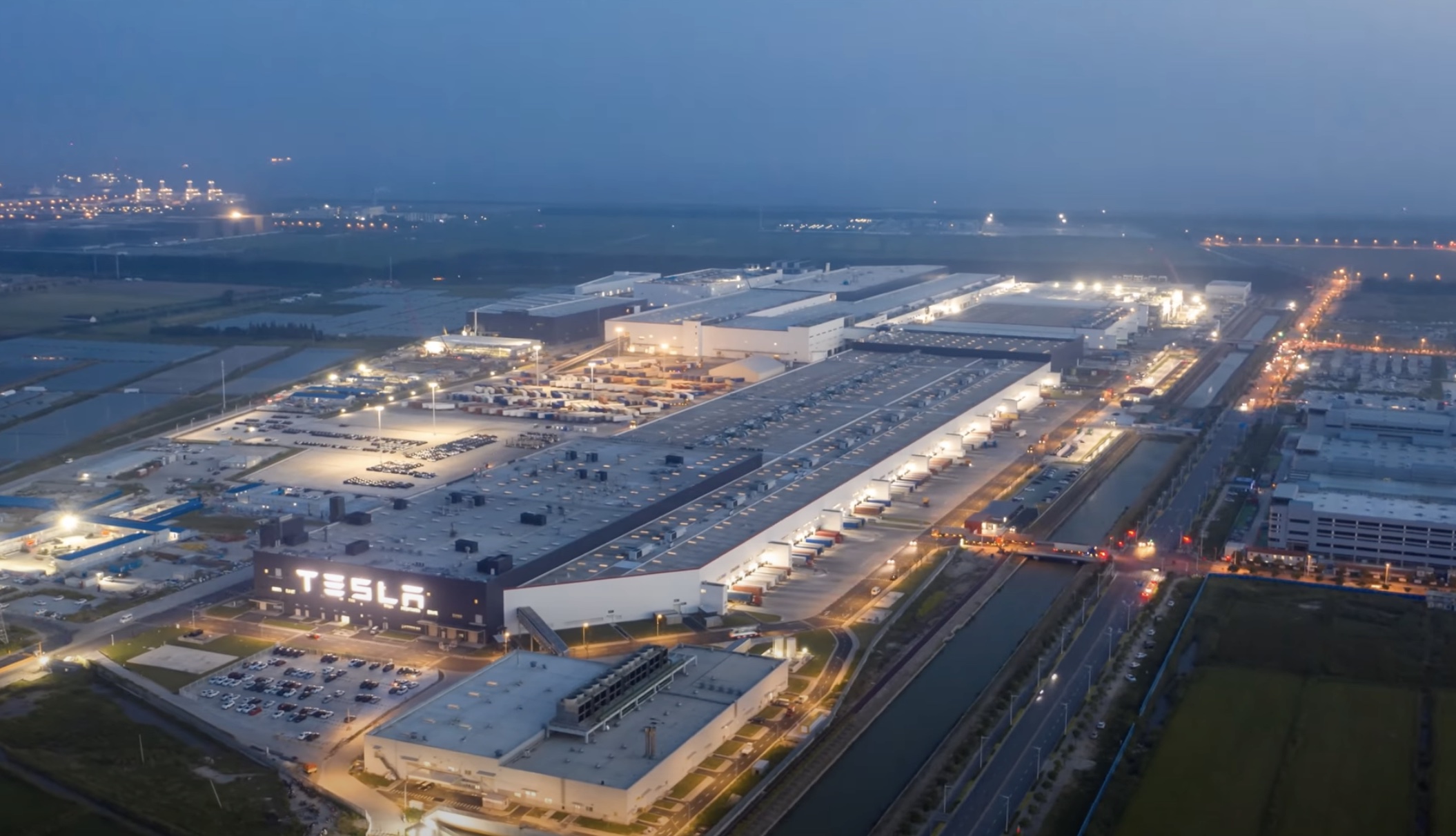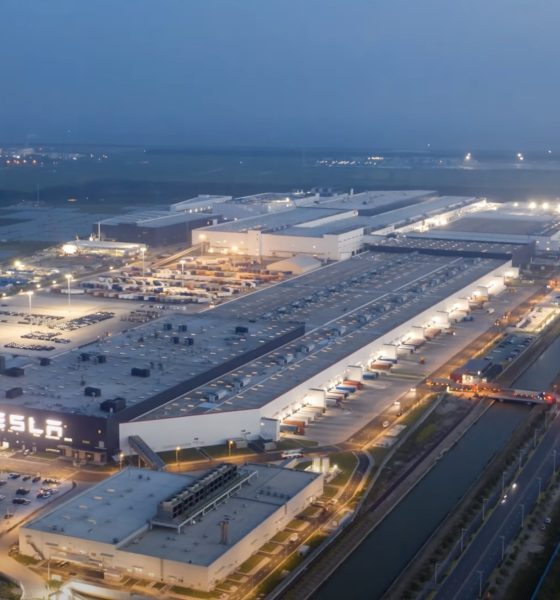

News
Tesla VP Grace Tao explains China’s Model 3 and Model Y price reductions
After a challenging December, Tesla China adopted a number of strategies designed to improve its vehicle sales in the country. Among these was a price reduction on the domestically-produced Model 3 sedan and Model Y crossover. Recent comments from Tesla VP Grace Tao have now provided some insights into these price adjustments.
In a recent interview with local Chinese media, Tao was asked about Tesla China’s rather volatile pricing strategy. Similar to Tesla in the United States, Tesla China saw a number of price adjustments over the past year. This has resulted in some netizens in the country stating that Tesla’s pricing strategy is “too casual.”
Addressing the inquiry, Grace Tao explained that the pricing strategy of Tesla China’s vehicles is “actually a forecast of the company’s cost changes in the next period of time.” She also explained that the landscape had changed now, at least compared to the last year due to the end of the pandemic.
“The biggest difference between 2023 and last year is that the epidemic is basically over, and we believe that the supply chain has largely returned to normal and will not experience the various unpredictable shortages of materials that have occurred in previous years, leading to uncertainty in costs. In my personal opinion, price adjustments reflect our good planning for the supply chain to a certain extent. We expect what the vehicle cost will be approximately and then make such adjustments according to this expectation,” the executive said.
The Tesla VP also addressed the issue of some consumers in China who were upset that they bought vehicles before the recent round of price reductions took effect. So notable were the reactions of some consumers that protests were reportedly held in a number of Tesla stores.
“Maybe some consumers say that ‘I bought it yesterday, and you can’t suddenly change the cost overnight,’ but the fact is that no company calculates the cost every day, but rather calculates it on a time period. At the same time, the price of industrial products cannot be immediately reflected in the terminal products. Some raw materials may still be contracted a few months ago, so it actually has a certain lag.
“In addition, the price of a product is not only affected by its own cost, but also by the market demand and competition. If there is a change in the market demand or competition, it will also affect the price of the product. Therefore, the price adjustment of a product is not a simple matter. It is a comprehensive consideration of the enterprise’s own cost, market demand and competition,” the executive said.
Overall, the executive clarified that Tesla China’s price adjustments are not casual at all. Instead, they are done with a clear understanding of the company’s costs, demand in the market, and competitors. So far, however, Grace Tao noted that Tesla China has not had to change its strategy due to market demand or competition, which bodes well for the company’s footing in the country’s auto market. The executive also highlighted that after this recent round of price reductions, the cost of the domestically-produced Model 3 and Model Y should become more stable.
“In the past, Tesla has made several larger price adjustments due to external factors that have had an impact on costs. For example, when we became a domestic car(maker), the price naturally decreased compared to a pure import, at least the tariff was saved by 15%. For example, after our supply chain stabilized, it would definitely be lower than before when it was shipped from abroad. Tesla’s supply chain localization rate is now 95%, so theoretically, there is not much room for improvement. Therefore, I think after this price adjustment, the price should be relatively stable.
“Tesla’s logic is very simple. When the cost is calculated to have changed, such as changing raw materials, we will immediately increase or decrease the price. Actually, Tesla’s logic is very simple. Consumers seem to think that the price drop was relatively large compared to last month, but in fact, the price rose last month, and compared to the costs before the price increase, the difference is not large,” she said.
The Teslarati team would appreciate hearing from you. If you have any tips, contact me at maria@teslarati.com or via Twitter @Writer_01001101.

News
Tesla FSD fleet is nearing 7 billion total miles, including 2.5 billion city miles
As can be seen on Tesla’s official FSD webpage, vehicles equipped with the system have now navigated over 6.99 billion miles.

Tesla’s Full Self-Driving (Supervised) fleet is closing in on almost 7 billion total miles driven, as per data posted by the company on its official FSD webpage.
These figures hint at the massive scale of data fueling Tesla’s rapid FSD improvements, which have been quite notable as of late.
FSD mileage milestones
As can be seen on Tesla’s official FSD webpage, vehicles equipped with the system have now navigated over 6.99 billion miles. Tesla owner and avid FSD tester Whole Mars Catalog also shared a screenshot indicating that from the nearly 7 billion miles traveled by the FSD fleet, more than 2.5 billion miles were driven inside cities.
City miles are particularly valuable for complex urban scenarios like unprotected turns, pedestrian interactions, and traffic lights. This is also the difference-maker for FSD, as only complex solutions, such as Waymo’s self-driving taxis, operate similarly on inner-city streets. And even then, incidents such as the San Francisco blackouts have proven challenging for sensor-rich vehicles like Waymos.
Tesla’s data edge
Tesla has a number of advantages in the autonomous vehicle sector, one of which is the size of its fleet and the number of vehicles training FSD on real-world roads. Tesla’s nearly 7 billion FSD miles then allow the company to roll out updates that make its vehicles behave like they are being driven by experienced drivers, even if they are operating on their own.
So notable are Tesla’s improvements to FSD that NVIDIA Director of Robotics Jim Fan, after experiencing FSD v14, noted that the system is the first AI that passes what he described as a “Physical Turing Test.”
“Despite knowing exactly how robot learning works, I still find it magical watching the steering wheel turn by itself. First it feels surreal, next it becomes routine. Then, like the smartphone, taking it away actively hurts. This is how humanity gets rewired and glued to god-like technologies,” Fan wrote in a post on X.
News
Tesla starts showing how FSD will change lives in Europe
Local officials tested the system on narrow country roads and were impressed by FSD’s smooth, human-like driving, with some calling the service a game-changer for everyday life in areas that are far from urban centers.

Tesla has launched Europe’s first public shuttle service using Full Self-Driving (Supervised) in the rural Eifelkreis Bitburg-Prüm region of Germany, demonstrating how the technology can restore independence and mobility for people who struggle with limited transport options.
Local officials tested the system on narrow country roads and were impressed by FSD’s smooth, human-like driving, with some calling the service a game-changer for everyday life in areas that are far from urban centers.
Officials see real impact on rural residents
Arzfeld Mayor Johannes Kuhl and District Administrator Andreas Kruppert personally tested the Tesla shuttle service. This allowed them to see just how well FSD navigated winding lanes and rural roads confidently. Kruppert said, “Autonomous driving sounds like science fiction to many, but we simply see here that it works totally well in rural regions too.” Kuhl, for his part, also noted that FSD “feels like a very experienced driver.”
The pilot complements the area’s “Citizen Bus” program, which provides on-demand rides for elderly residents who can no longer drive themselves. Tesla Europe shared a video of a demonstration of the service, highlighting how FSD gives people their freedom back, even in places where public transport is not as prevalent.
What the Ministry for Economic Affairs and Transport says
Rhineland-Palatinate’s Minister Daniela Schmitt supported the project, praising the collaboration that made this “first of its kind in Europe” possible. As per the ministry, the rural rollout for the service shows FSD’s potential beyond major cities, and it delivers tangible benefits like grocery runs, doctor visits, and social connections for isolated residents.
“Reliable and flexible mobility is especially vital in rural areas. With the launch of a shuttle service using self-driving vehicles (FSD supervised) by Tesla in the Eifelkreis Bitburg-Prüm, an innovative pilot project is now getting underway that complements local community bus services. It is the first project of its kind in Europe.
“The result is a real gain for rural mobility: greater accessibility, more flexibility and tangible benefits for everyday life. A strong signal for innovation, cooperation and future-oriented mobility beyond urban centers,” the ministry wrote in a LinkedIn post.
News
Tesla China quietly posts Robotaxi-related job listing
Tesla China is currently seeking a Low Voltage Electrical Engineer to work on circuit board design for the company’s autonomous vehicles.

Tesla has posted a new job listing in Shanghai explicitly tied to its Robotaxi program, fueling speculation that the company is preparing to launch its dedicated autonomous ride-hailing service in China.
As noted in the listing, Tesla China is currently seeking a Low Voltage Electrical Engineer to work on circuit board design for the company’s autonomous vehicles.
Robotaxi-specific role
The listing, which was shared on social media platform X by industry watcher @tslaming, suggested that Tesla China is looking to fill the role urgently. The job listing itself specifically mentions that the person hired for the role will be working on the Low Voltage Hardware team, which would design the circuit boards that would serve as the nervous system of the Robotaxi.
Key tasks for the role, as indicated in the job listing, include collaboration with PCB layout, firmware, mechanical, program management, and validation teams, among other responsibilities. The role is based in Shanghai.
China Robotaxi launch
China represents a massive potential market for robotaxis, with its dense urban centers and supportive policies in select cities. Tesla has limited permission to roll out FSD in the country, though despite this, its vehicles have been hailed as among the best in the market when it comes to autonomous features. So far, at least, it appears that China supports Tesla’s FSD and Robotaxi rollout.
This was hinted at in November, when Tesla brought the Cybercab to the 8th China International Import Expo (CIIE) in Shanghai, marking the first time that the autonomous two-seater was brought to the Asia-Pacific region. The vehicle, despite not having a release date in China, received a significant amount of interest among the event’s attendees.








